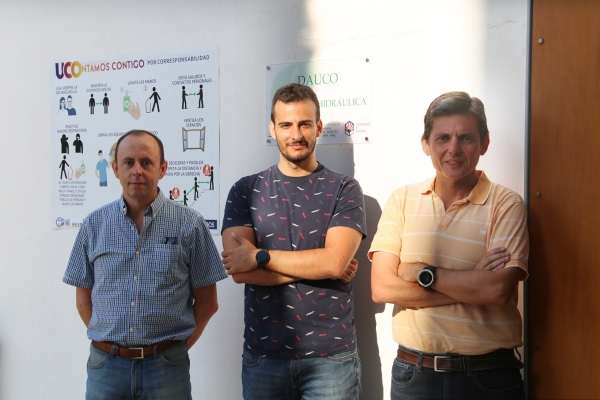In a context of water scarcity and growing demand for energy to implement pressure irrigation systems (with the costs that this entails), irrigation communities making the right irrigation decisions means lower water-related expenses and decreased energy consumption.
For the optimal management of water resources it is necessary to predict how much water irrigators will use at any given time so that managers can estimate water and energy requirements in real time. In order to issue accurate predictions it is necessary to include a key variable that is difficult to measure: farmers’ behaviour.
In the creation of models that make is possible to anticipate irrigators' behaviour, they have been working for years at the Hydraulics and Irrigation group of the María de Maeztu Excellence Unit - Department of Agronomy of the University of Córdoba (DAUCO) which has now managed to predict how much water each irrigator in a community will use according to rate period.
Although previous work yielded tools that allowed one to determine the amount of water that would be used by irrigation communities, and on what day, the CANGENFIS model, created by DAUCO researchers Rafael González, Emilio Camacho and Juan Antonio Rodríguez goes one step further, revealing how much water will be used in a more precise time window: rate periods. Thus, it provides information on when there is the most demand for the network, whether or not it is necessary to activate in parallel all the pumps that the irrigation community has, and optimizes the contracting of the most appropriate electricity rate, thus allowing for reduced energy costs. It is also known in advance which pipes could be overloaded, and the effects of malfunctions can be predicted.
“It allows us to integrate water and energy management and make optimal use of that energy as well. If the irrigation community has a photovoltaic energy system, it can know how much energy it has to reserve, and sell the rest; or how much energy it has to buy, since there are communities that buy energy from one day to the next, and with this they can anticipate this purchase with precision,” explained Emilio Camacho.
CANGENFIS Model: Artificial Intelligence to Learn About Irrigators
This new model has been trained and tested at the Canal del Zújar Irrigation Community (Extremadura) with data from the irrigation campaigns of 2015, 2016, 2017 and 2018.
Combining Artificial Intelligence techniques like fuzzy logic, artificial neural networks, and genetic algorithms, it models the behaviour of irrigators and predicts the distribution, by rate period, in the short term, of the water used by both irrigators and the entire community.
Rafael González: “the model’s operation is simple. It receives a series of inputs on climatic variables closely related to the thermal sensations of the grower, such as relative humidity and maximum temperature". Also included are "variables related to the phenological state of the crop and others related to the farmer's day-to-day life", as when it is a holiday or a weekend day this can influence irrigation decisions. This set of inputs, with the calibrated model, "tells us, for each rate period, how much water the farmer is going to use the next day," González concludes. In light of the results, variables such as the rates and the number of hours in each rate period take on more importance to irrigators, shaping their behaviour more than agroclimatic variables.
The forecasts' accuracy was around 80% for rice, corn and tomato crops (19.9%, 22.9% and 19.5% margins of error), a fairly high degree of precision for this type of prediction, which "demonstrates the importance of taking into account the irrigator's behaviour in this type of prediction," says Juan Antonio Rodríguez.
The challenge now is to make predictions further in advance, earlier than one day, to augment response capacities.
New energy rate periods
This model was developed and tested prior to the entry into force of the new energy rate periods on June 1, 2021. However, the model can be adjusted to these new tranches, and can also reveal whether irrigators alter their behaviour depending on the new prices.
González Perea, R., Camacho Poyato, E. &Rodríguez Díaz, JA. (2021)Forecasting of applied irrigation depths at farm level for energy tariff periods using Coactive neuro-genetic fuzzy system,Agricultural Water Management, Vol. 256,107068, https://doi.org/10.1016/j.agwat.2021.107068


